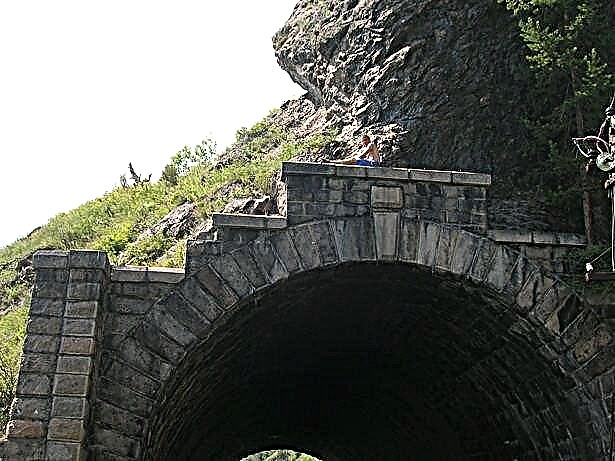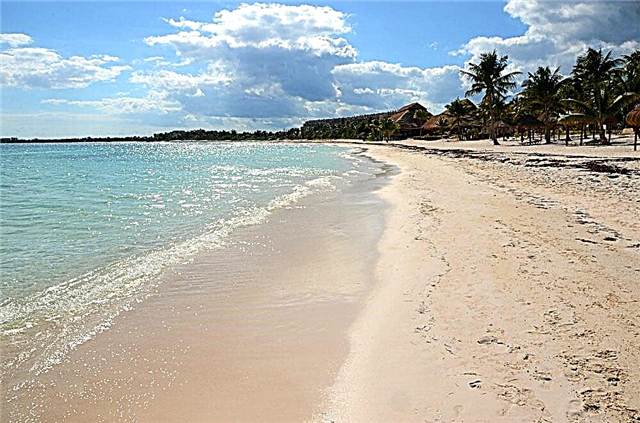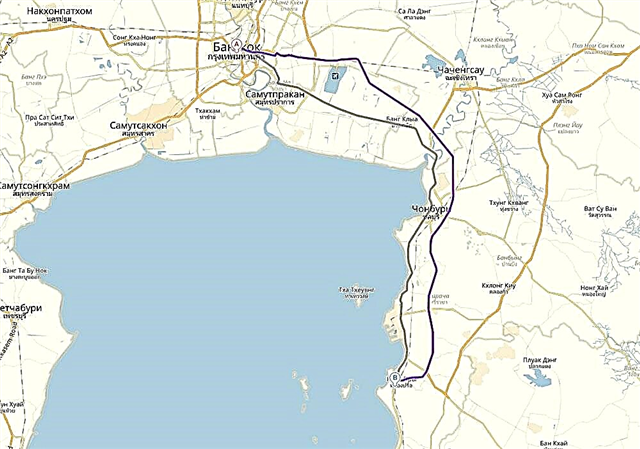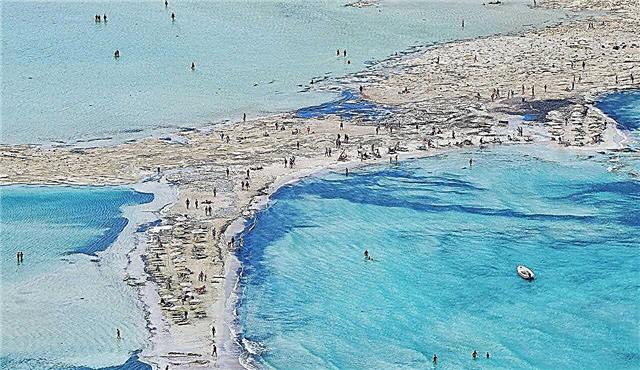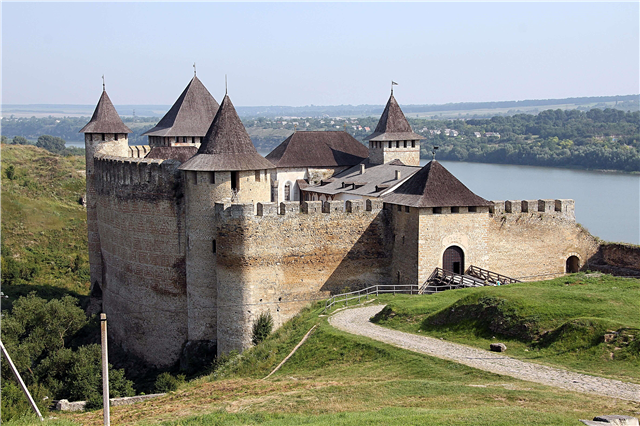Many uninitiated travelers associate the Bryansk region with only two things - the partisan movement of the Great Patriotic War and dense forests. However, this territory of Russia is much more controversial and remarkable. In Bryansk and the surrounding area, outstanding writers of the past have not been forgotten: this is how, for example, the park-museum of Alexei Tolstoy appeared. There are also many religious sites: this is the Resurrection Cathedral in Pochep, and the Svensky Assumption Monastery, and many others.
There are also enough architectural monuments, such as the mansion of the manufacturer Osipov or the estate of Sapozhkov. The Bryansk region is not very large in area, if desired, an experienced tourist can go around it in a week or two. The trip will turn out to be thoughtful and diverse and will definitely be remembered for a long time.
The most interesting and beautiful places in the region
List, photos with names and descriptions of the sights of the Bryansk region!
Museum-reserve "Ovstug"
It is located in the Zhukovsky district. Founded in 1957. The exposition is dedicated to Tyutchev and is located in the estate that in the past belonged to his family. Literary readings are held annually. The nearby park has been ennobled. There is a monument to the writer, and the entourage inside the buildings has been recreated. On the territory, in addition to the main building, there are: a gazebo, a guest wing, a church, a mill, etc.

Sapozhkov's estate
Located in the village of Vyunki. Built at the beginning of the 20th century. Belonged to the manufacturer Sapozhkov. The only architectural monument in the region, made in the Gothic style, or rather in imitation of it. There is a lake nearby, which the peasants dug by hand during the construction phase of the complex. At the moment, the territory and the estate itself are given over to a children's sanatorium.

Reserve "Bryansk Forest"
It is located on the territory of two districts: Suzemsky and Trubchevsky. Founded in 1987. The area is 121 km². It is part of the Nerusso-Desnyansky woodland. There are natural monuments on the territory: "Ryzhukha Swamp", "Kolodez", "Goremlya" and others. All 10 species of European woodpeckers are found only here. Not only typical inhabitants are protected, but also specially imported bison, which they plan to breed.

Mound of Immortality
It is located in Bryansk on the territory of the Nightingale Park. Founded in 1972. Dedicated to the memory of the fallen soldiers who fought on the fields of the Second World War. It is crowned with a star 18 m high, installed on an embankment of 12 m. There is an observation deck with a view of the Desna. Although Kurgan is an important part of the park, "Nightingales", in addition to educational, also have an entertainment function: a little further there are attractions and cafes.

Svensky Assumption Monastery
Male. Located in the village of Suponevo. Founded around 1288. Its construction is connected with the legend about the miraculous icon, which allegedly restored the sight of the Bryansk prince Roman. After the revolution, the monastery was closed, some of the buildings were destroyed or blown up. In the early 90s, the Russian Orthodox Church was returned. By 2014, all facilities have been restored. But the icon of the Mother of God remained in the Tretyakov Gallery, where it was taken by the Bolsheviks.

Memorial complex "Hatsun"
It is located on the site of a village whose population was destroyed at the very beginning of the Second World War. Opened in 1977. Restoration took place in 2009. The exposition of the museum is divided into two parts: the pre-war period and the story itself about the events of October 25, 1941. The complex is dedicated not only to Hatsen, but also to 1000 more of the same small settlements where the Nazis fought. All of them are plotted on a specially created map.

Memorial complex "Partizanskaya Polyana"
Located near the White Coast. Founded in 1969. The place for the complex was not chosen by chance, here in 1941 a general gathering of partisan detachments took place, from which the underground movement began. There is a stele made in the form of a map, where the main objects of the partisans are marked. The museum works on a permanent basis. One of its main exhibits is a diorama associated with the explosion of a bridge.

Bryansk Regional Museum
Opened in 1921. During the Second World War, almost the entire collection was lost. Since 1949, the museum began to work again and gradually fill up the funds. In 1983 it acquired a new building, built specifically for the museum. In front of it is the Partizan Square, which once bore the name Khlebnaya. In 1966, a monument to the liberators of Bryansk appeared on it. It depicts soldiers and partisans going on the attack.

Yudinovsky Museum Complex
Located in the Pogarsky region. Created on the basis of the Upper Paleolithic site discovered in 1947. The museum was opened in 1985. Initially, it was a pavilion built around one of the excavations. Paleolithic symposia have been held here several times. Nearby, there is a museum of local lore, an art gallery with works of domestic masters and the house-museum of Polikarpovich, the researcher who discovered the parking lot.

Crystal Museum in Dyatkovo
It was formed at the plant in 1835. Then it was decided to collect samples of products that were out of the general range. In 1976, a special room was allocated, where the collection was moved. The peculiarity of the museum is that there are no fences and glasses, since when examining crystal, lighting and the viewing side play an important role. Here are, among other things, the decorations of the destroyed Transfiguration Church.

Temple-monument "Burning Bush" in Dyatkovo
It is located on the site where the Transfiguration Church once stood. It was destroyed in the 20s of the last century. In 1999, a chapel was laid here. The constructed temple was consecrated in 2003. One of its features is the iconostasis of the temple, made of crystal. The best craftsmen of the local factory worked on it by hand. The same applies to the interior decoration and especially to the heavy crystal chandeliers.

Lokotsky stud farm
Founded in 1842. One of the oldest in the country. The style is early classicism, although later the appearance has changed slightly. The stud farm was directly owned by the Romanov family. I practically never stopped working. Only the period of the Second World War turned out to be difficult, although after the breeding of animals they re-launched, replacing local breeds with imported ones, but later returned to their origins.

Chashin Kurgan
Located in Bryansk. In some sources it is referred to as the Bryansk Kremlin. Used as a defensive structure. Since it was on Pokrovskaya Gora, it had a wonderful view of the surroundings, including the Desna. There were guard towers (two of them were gates) and oak walls. Now in its place is only an earthen contour and a depression.

Vshizh village
It is located in the Zhukovsky district. In the 40s of the XIX century, the first excavations were carried out here and the remains of an ancient temple were discovered. At the same time, the interior decoration has been partially preserved, as is the crypt. A hundred years later, a fortress sanctuary was found, also in good condition. And in 2001, they managed to dig out a boat with a length of almost 9 meters. Despite such valuable artifacts, the area is not protected and may soon be lost to historians.

Manor of Rumyantsev-Zadunaisky
Located in the Klintsovsky district. The exact year of construction is unknown. Most likely refers to the beginning of the 18th century. The style is Empire style with a number of changes made in accordance with the fashion of that time. In addition to the manor house, the complex included an outbuilding, courtyard buildings and a church. Changed owners often. Most of the buildings have lost their original appearance; the park also looks wild and unkempt.

A.K. Tolstoy Literary Memorial Museum
Located in the Red Horn. The main building of the museum is the "Hunting Castle". It recreates the atmosphere of those years when Tolstoy lived and worked here. The collection consists of personal belongings, paraphernalia of the past, first editions, portraits of the writer, documents and other things.In addition, on the territory there are: a park, an outbuilding, a poultry house, a manager's office, a gatehouse and other buildings.

Tkachev Brothers Museum
Located in Bryansk. Opened in 1995. Dedicated to the work of folk artists. The collection consists of their works, including graphics and previously unseen paintings. It is divided into themes and stages of creativity. In addition, the museum hosts several socially important events, workshops for children, and also hosts family evenings and master classes.

Resurrection Cathedral in Pochep
Built in the 18th century. Style - classicism with baroque elements. The layout is a Latin cross. There is a bell tower with a high spire. The snow-white building with dark domes stands out from the rest of the building. The interior decoration contrasts sharply with the exterior: a very richly decorated iconostasis and gilding against straight lines, small windows and a lack of decor in the decoration of the walls.

Trinity Cathedral of Bryansk
Founded in 2005. Construction was completed by 2012. Now it is the main temple of the region. A bell tower 80 meters high was erected nearby. It was named "Peresvet". This and other buildings are part of the complex and are made in the same style and color scheme. One of the values of the cathedral is the relics of Prince Oleg of Bryansk, known for his piety.

Nikolo-Odrinsky Monastery
Female. Located in the village of Odrina. Founded in the XIII century. During the Soviet period, there was a juvenile colony and a military training ground. The monastery status was returned in 1995. The main shrine is the "Guarantor of the Sinners" - an original icon, first mentioned in 1843. Also in the monastery are kept the altarpiece of the old Gospel and the icon of St. Nicholas, about the appearance of which there is a legend.

Peter and Paul Monastery in Bryansk
Feminine, but was originally masculine. Founded at the beginning of the 18th century. It was formed on the site where a monastery, created by Prince Oleg, stood several centuries ago. He either lost or acquired farmsteads. Emperors' decrees often changed its status. It was liquidated under Soviet rule. It has reopened since the 2000s. Before that, it was in desolation and performed a variety of functions. The cemetery on the territory of the monastery was destroyed.

Intercession Cathedral in Bryansk
Founded in 1698. The oldest temple in the city. Five-headed. The style of construction is typical for that time. The upper church is cold with brick walls, the lower one is warm. There used to be a bell tower, but they got rid of it after the next reconstruction of the temple. After the revolution, the building was constantly used, sometimes as an archive, sometimes as a school. Divine services have been held again since 1991.

Park-Museum named after A. Tolstoy
Located in Bryansk. Founded in 1936. The area is almost 3 hectares. Its distinctive feature is wooden sculptures of different times of installation. Among them: "Bryansk Madonna", "Emelya", "Desnyanka" and others. There are three fountains. Nearby there are attractions, a temple, a stadium, a summer stage and a cafe. Previously, there were more objects, but they are lost. It is both a resting place and a historical monument.

Estate of Zavadovsky in Lyalichi
Built in the 18th century. Belonged to the Count, also bears the name of Yekaterinodar. Once upon a time there was a whole complex of buildings for various purposes on this place. The current state is deplorable, from some buildings only foundations and pieces of walls remained. However, restoration and restoration work is already underway. The first among the put in order is the Church of St. Catherine.

Gagarin Boulevard in Bryansk
It consists of two sections: a very wide staircase and a flatter part, where the movement of cars is also closed. It stretches for 1 km from the embankment almost to Lenin Square. The height of the rise is 45 m. Earlier it was called Christmas Mountain. Renamed in 1966, after a visit to the city of Gagarin. Partial reconstruction is underway, there are plans to modernize the area.

Pokrovskaya mountain
Located in the historical part of Bryansk. The territory is divided into sectors and refined. There is an observation deck with a view of the city. Monuments - a monument depicting Peresvet and the singer Bayan, ancient cannons, a monument in honor of the millennium of Bryansk. The local park has cobbled paths, open spaces, and many trees. Nearby is the Intercession Cathedral.

Bezhitskaya Church of the ECB in Bryansk (Temple of the Renaissance)
The Baptist House of Prayer was built in 1996. It was decided to erect it in honor of the centenary of the foundation of the church. The building is imposing in size and can be seen from afar. There is a small exhibition in the hall that tells the history of the church. A spacious worship hall with benches and a balcony with chairs. The corridors are decorated with paintings painted on wood.

Gorno-Nikolsky monastery in Bryansk
Male. Built in 1751 in the Baroque style. It is well preserved, even its stone fence remained intact. In the Soviet period, there was an archive here, after which it gave way to a planetarium. The main shrines are a crucifix with a particle of the Cross of the Lord, a reliquary with particles of the relics of saints, several valuable icons. Everyone comes to the service in the central church.

Assumption Cathedral in Mglin
Construction was completed by 1830, and began in honor of the victory over Napoleon. The external appearance was largely copied from the Church of Catherine, located in the village of Lyalichi. Style - Russian classicism, characterized by the absence of external decor. During the Soviet era, it did not work, although sometimes services were resumed for a short time. On a permanent basis, it functions again in 1989.

Mansion of the manufacturer G.F. Osipov
Located in Novozybkov. Built in 1898. It belonged to a local manufacturer who was engaged in the production of matches. After the revolution, the building was given for a technical school, then for an elementary school. As a result, it was recognized as an emergency facility and was empty. Private traders bought the mansion and turned it into a travel agency. The new owner decided to restore the architectural monument, work has been going on since 2015.


